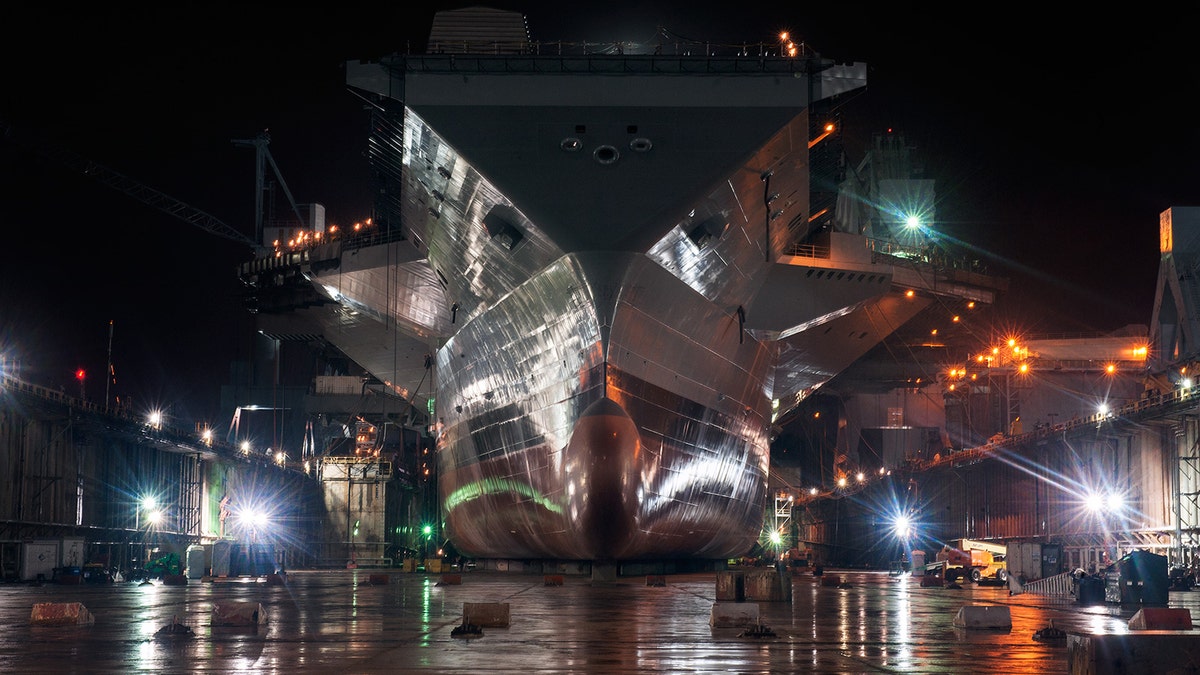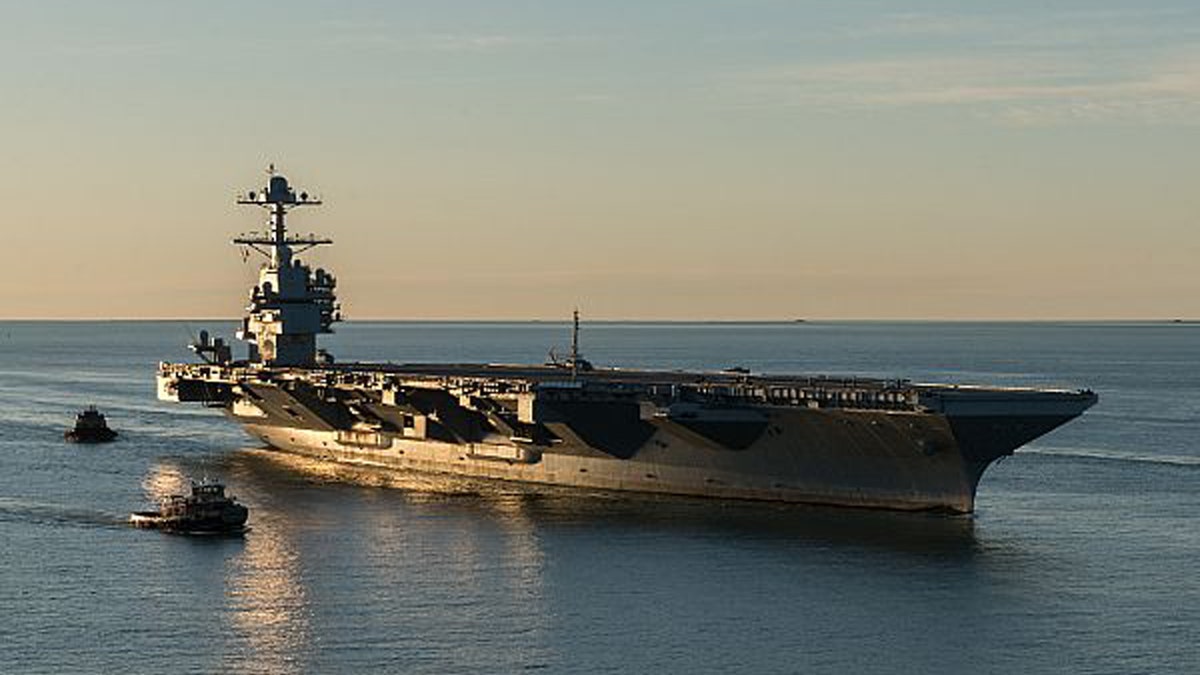
The freshly painted Gerald R. Ford (CVN 78) shines at night in the empty dry dock, waiting to meet water for the first time. Photo by John Whalen. (©2013 Huntington Ingalls Industries)
The USS Gerald R. Ford is set to go into active duty on July 22, after concerns about its technology and costs have caused politicians to criticize the aircraft carrier's new technology.
The 1,100-foot ship, which incorporates the U.S. Navy's first new aircraft carrier design in 40 years, uses advanced technology and operational systems to let aircraft take off and land quicker than previously done. It will have a total of 2,600 sailors, approximately 600 less than a Nimitz-class flattop, according to the carrier's commissioning website.
But the technology, which includes electromagnetic catapults, the ability to launch a third more aircraft than older carriers and additional arresting gear, has caused some concerns in Washington.
DARPA TRYING TO LAUNCH SMALLSAT EXPERIMENT ON AN INDIAN ROCKET

The aircraft carrier Pre-Commissioning Unit (PCU) Gerald R. Ford (CVN 78) pulls into Naval Station Norfolk for the first time on April 14, 2017. The first-of-class ship - the first new U.S. aircraft carrier design in 40 years - spent several days conducting builder's sea trails, a comprehensive test of many of the ship's key systems and technologies. (U.S. Navy photo by Matt Hildreth courtesy of Huntington Ingalls Industries/Released) (©Newport News Shipbuilding 2017)
President Donald Trump told Time magazine earlier this year that the Navy should go back to using steam catapults to launch fighter jets because the new system "costs hundreds of millions of dollars more money and it's no good."
The ship is also two years behind schedule. Sen. John McCain, chairman of the Senate Armed Services Committee, previously said the delays were "unacceptable" and "entirely avoidable."
Despite his criticism of some of the ship's technology, President Trump will preside over the commissioning of the nation's newest aircraft carrier at its base in Norfolk, Virginia.
NEW KING STALLION HELICOPTER BOOSTS MARINES' AERIAL POWER
The Navy officially accepted delivery of the carrier in Newport News, Virginia, May 31 after successful trials.
"Congratulations to everyone who has helped bring CVN 78 to this historic milestone," said Rear Adm. Brian Antonio, program executive officer for aircraft carriers in a June 1 statement. "Over the last several years, thousands of people have had a hand in delivering Ford to the Navy -- designing, building and testing the Navy's newest, most capable, most advanced warship... It is because of them that Ford performed so well during acceptance trials, as noted by the Navy's Board of Inspection and Survey."
In addition to the Ford, there are two other carriers in its class, with the three ships costing approximately $42 billion.
The USS John F. Kennedy is scheduled to launch in 2020 and the USS Enterprise is set to begin construction next year.
The USS Ford will undergo a number of tests prior to becoming operational in the next few years.
The Associated Press contributed to this report.
